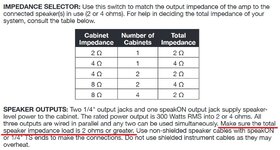TheRealDonnie
Banned
Well-known member
I get that, but there has to be something relative otherwise the fluctuations would be too much?
Think of an engine. One form of power converted to another with a give and take between the two.
Look at the Celestion curve. It's a guitar speaker so it's normally only seeing full power frequencies in
the 100 to 5K range which is where it's impedance is in the 'comfy zone'.
Like crusing in a car between 20 and 60 MPH.
If you were to run a static signal of 55 or say 15K-16K Hz into that speaker sooner or later the amp is going to say f-ck this!
Same goes for a standard car engine being driven on a highway for hours at either 5 or 120 MPH.
Keep the signal going into the speaker within it's intended operational zone and the amp will never
have to strain. An ohm meter will be jumping around like crazy but all within specifications of both
sides of the engine.
Last edited:

